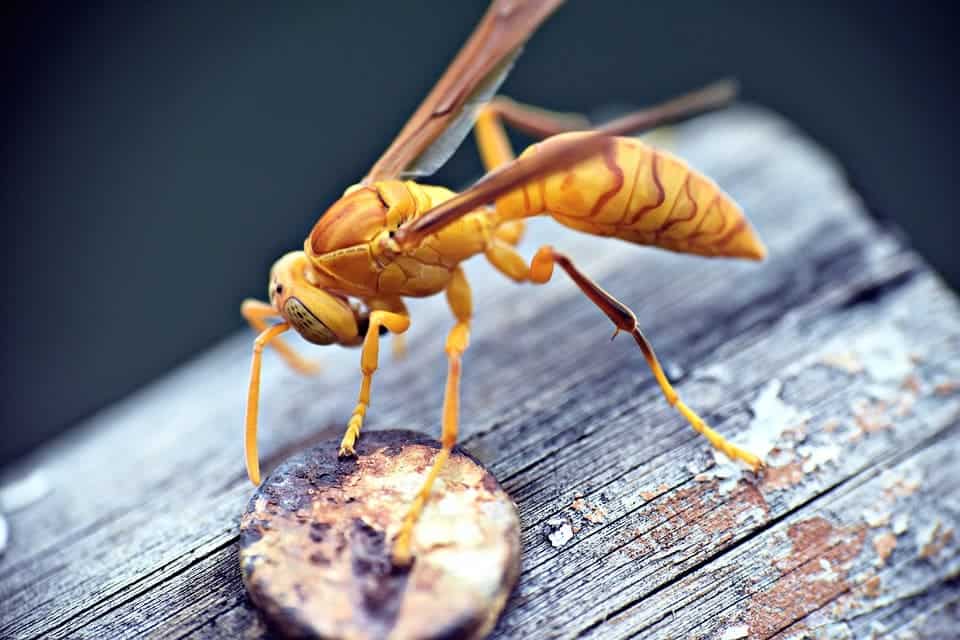Paper wasps may be much more intelligent than you’d assume.

Image credits Sandeep Handa.
One of the traits that have traditionally been considered a hallmark of human-like mental abilities is transitive interference. Transitive interference (or TI) is the ability to use known relationships to infer unknown relationships. Here’s an example: if A is greater than B, and B is greater than C, how do A and C compare? ‘A is greater than C!’ our brains blurt out with a shot of serotonin for getting solving the puzzle.
We used to think that only humans were capable of such high-level mental acrobatics. In the last couple of decades, we’ve instead come to see that isn’t true. A lot of vertebrates, from primates to birds to fish, have proven their ability to handle TI. Invertebrates, however, haven’t.
Until now
“This study adds to a growing body of evidence that the miniature nervous systems of insects do not limit sophisticated behaviors,” said Elizabeth Tibbetts, a professor in the Department of Ecology and Evolutionary Biology.
“We’re not saying that wasps used logical deduction to solve this problem, but they seem to use known relationships to make inferences about unknown relationships,” she explains. “Our findings suggest that the capacity for complex behavior may be shaped by the social environment in which behaviors are beneficial, rather than being strictly limited by brain size.”
The study Tibbetts led provides the first concrete evidence of TI in an invertebrate animal: the paper wasp (genus Polistes). The only previously-published study on this subject worked with honeybees (genus Apis), which didn’t seem able to perform TI. One explanation the authors of that study considered was that the honeybees’ nervous system is too size-constrained to handle the task. That their processor, if you will, is too small to run the TI app.
Paper wasps have a nervous system roughly comparable to that of the honeybee — around one million neurons in total. However, unlike honeybees, paper wasps are more socially-savvy. They exhibit certain types of social behavior that honeybees do not. That had the team questioning whether or not the paper wasps’ social skills would allow them to succeed where honeybees had failed.
Tibbetts’ team worked with two common species of paper wasps, Polistes dominula and Polistes metricus. They collected paper wasp queens from several locations around Ann Arbor, Michigan, started colonies in the lab, and made these wasps tell between pairs of colors (called premise pairs). They did this by training individual wasps to associate one color in the pair with a mild electric shock.
Later, the insects were presented with novel color pairs. They were able to use TI to pick the safe one of these novel pairs, Tibbetts says.
“I was really surprised how quickly and accurately wasps learned the premise pairs,” said Tibbetts, who has studied the behavior of paper wasps for 20 years.
“I thought wasps might get confused, just like bees,” she said. “But they had no trouble figuring out that a particular color was safe in some situations and not safe in other situations.”
The team believes that different types of cognitive abilities are favored in bees and wasps because they display different social behaviors. While both insects have brains smaller than a grain of rice (with pretty much the same mental oomph) a honeybee colony has a single queen and multiple equally ranked female workers. In contrast, paper wasp colonies have several reproductive females known as foundresses. The foundresses compete with their rivals and form linear dominance hierarchies.
Where a wasp falls in the hierarchy determines how much reproduction, food, and work it receives. TI-like processes could thus help wasps rapidly estimate the social standing of a colony-mate that they are unfamiliar with. In previous studies, Tibbetts and her colleagues showed that paper wasps recognize individuals of their species by variations in their facial markings and that they behave more aggressively toward wasps with unfamiliar faces.
The team notes, however, that this is still a hypothesis. While the present study shows that paper wasps can build and manipulate an implicit hierarchy, it does not pinpoint the precise mechanisms that underpins this ability. Further research is needed to understand exactly why the paper wasps ‘unlocked’ TI.
The paper “Transitive inference in Polistes paper wasps” has been published in the journal Biology Letters.






